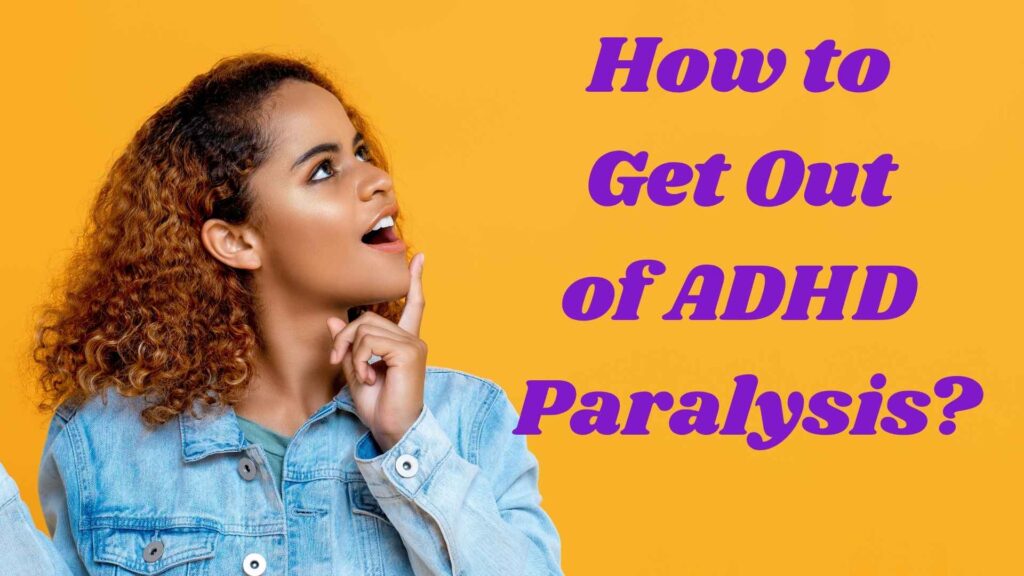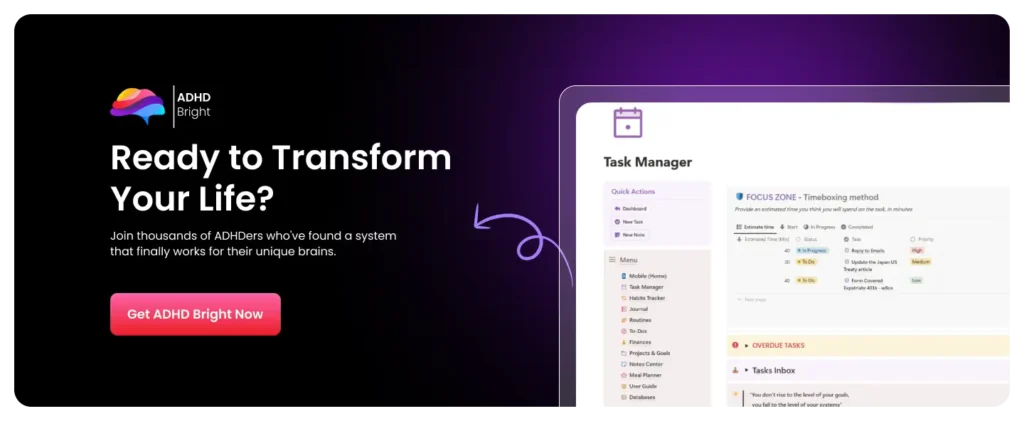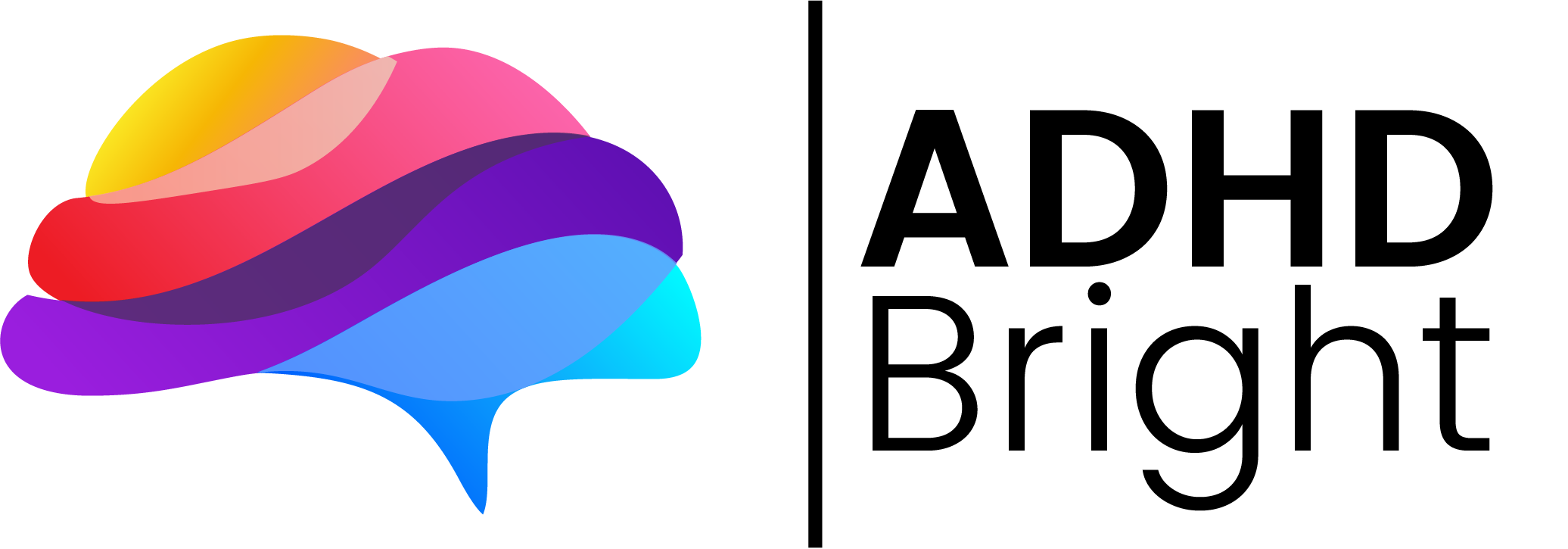TL;DR
ADHD paralysis happens when your executive function systems freeze under too many choices, emotions, or steps. You know what to do—but your brain just can’t start.
To move forward, reduce overwhelm, prioritize tasks, and rebuild clarity using practical strategies like brain dumps, time management tools, and structured planning systems.
If you struggle to maintain focus, my ADHD Planner was the system that helped me get unstuck—it turned my own paralysis into progress.
What Is ADHD Paralysis?
If you’ve ever stared at your to do list for hours, knowing exactly what needs to be done but feeling physically unable to start, that’s ADHD paralysis.
Also called task paralysis or ADHD task paralysis, it’s one of the most frustrating experiences for people with ADHD—a kind of mental paralysis where your brain just won’t cooperate.
Even though it’s not a formal symptom in the Diagnostic and Statistical Manual, it’s a well-documented experience tied to executive dysfunction—the mental process responsible for planning, organizing, and acting on tasks.
There are three main types of ADHD paralysis:
- ADHD choice paralysis – Too many options, leading to decision fatigue and inaction.
- Analysis paralysis – Overthinking every step until you can’t take one.
- Emotional paralysis – When emotional dysregulation or fear of failure freezes your motivation.
Each form drains your mental energy, making even mundane tasks feel impossible.
What Causes ADHD Paralysis?
At its core, ADHD paralysis happens because the ADHD brain struggles to process information and regulate effort in the same way as neurotypical brains.
Executive functioning—including planning, prioritizing, and starting tasks—relies heavily on dopamine, the neurotransmitter that drives motivation and reward.
People with attention deficit hyperactivity disorder often experience lower baseline dopamine, which makes complex tasks and delayed rewards feel overwhelming.
When your brain can’t accurately perceive what’s important, it enters paralysis mode—you freeze, feel overwhelmed, and avoid the task altogether.
Some triggers include:
- Overwhelming feelings or sensory overload
- Poor time management and time blindness
- Complex projects that require multiple steps
- Emotional dysregulation like anxiety or guilt
- A lack of clarity or direction
💡 In my own experience, lack of clarity was my biggest trigger for ADHD paralysis. I created ADHD Bright just for myself—to build structure and calm my mind. What started as a personal coping system eventually became a full digital planner built to help others overcome the same challenges.
If you struggle with chronic overwhelm and too many open loops, I recommend reading Task Overwhelm and ADHD: How to Find Clarity Fast — it dives deeper into how executive dysfunction and analysis paralysis feed each other, and how to break the cycle fast.
How Long Does ADHD Paralysis Last?
The duration of ADHD paralysis varies. Sometimes it lasts a few minutes; other times, it can persist for days—especially when emotions, deadlines, or complex tasks pile up.
Without tools to manage ADHD paralysis, it can evolve into an ADHD shutdown, where emotional and mental fatigue completely block productivity.
But here’s the good news: overcoming ADHD paralysis doesn’t require superhuman discipline—it’s about working with your brain, not against it.

7 Strategies to Overcome ADHD Paralysis
1. Start with a Brain Dump
When your mind feels stuck, the fastest way to release mental paralysis is through a brain dump.
Write down everything that’s swirling in your head—tasks, worries, random ideas—without judgment.
This clears your executive function load and helps you process information externally instead of mentally juggling it.
Once it’s all out, highlight just one task to begin with. This is the foundation of your productivity strategy.
2. Break Complex Projects into Micro-Tasks
A complex project can trigger analysis paralysis because it feels endless.
Break it down into small, specific steps. For example:
“Write report” ➜ “Open document,” “Add title,” “Write first paragraph.”
When tasks are small enough to complete quickly, your brain receives an instant reward hit of dopamine—helping you stay focused and finish tasks faster.
This is the same executive functioning principle built into ADHD Bright’s task manager feature—it visualizes your progress to prevent overwhelm.
You can also read my article on ADHD Task Initiation: How to Start When You Feel Stuck for strategies that tackle paralysis mode head-on.
3. Reduce Choices to Combat ADHD Choice Paralysis
Choice paralysis is a major contributor to ADHD mental paralysis. Too many paths (or tabs) create confusion and emotional overload.
Simplify decisions by setting defaults:
- One workspace
- One morning routine
- One tool for planning (like ADHD Bright)
Fewer decisions mean less friction—and less executive dysfunction.
4. Clarify Your Next Step
Clarity is the antidote to paralysis.
When you don’t know what the next step is, your brain perceives the task as too big or undefined, which triggers mental paralysis.
Ask yourself:
- What’s the very next physical action I can take?
- Can I do it in 2 minutes?
- What’s blocking me—emotion, energy, or uncertainty?
This approach helped me overcome ADHD paralysis repeatedly. ADHD Bright was built to make these next steps visual—you see your daily tasks clearly, one block at a time.
If you struggle with focus mid-task, check out How to Focus with ADHD for neuroscience-based attention tools.
5. Use Structured Planning Systems
Executive function thrives on structure and predictability.
A visual to do list or digital system like ADHD Bright helps your brain externalize memory, reduce feeling overwhelmed, and maintain focus.
If you’re not sure how to build consistency with tools, see How to Use a Planner With ADHD. It’s full of techniques to keep your systems light and sustainable.
Remember: your planner isn’t a punishment—it’s a dopamine tool for motivation, reflection, and accountability.
6. Move Your Body to Reset Your Brain
Physical movement helps restart a frozen brain.
When you’re stuck in paralysis mode, even small physical activity—like walking, stretching, or dancing—can improve mental health and emotional dysregulation.
It activates dopamine and norepinephrine, two chemicals that help people with ADHD regain energy and manage symptoms.
This is especially useful during ADHD shutdowns, where your body feels as sluggish as your thoughts.
7. Seek Support and Accountability
No one should have to fight ADHD paralysis alone.
Reach out to an ADHD coach, therapist, or healthcare provider for guidance on ADHD treatment and emotional support.
You can also connect with the ADHD community online to share tools, coping mechanisms, and realistic wins.
Sometimes, just knowing someone else understands your ADHD experience reduces the shame spiral that keeps you stuck.
The Science Behind Paralysis Mode
Executive dysfunction in adult ADHD stems from differences in how the brain manages planning, emotion, and motivation.
According to a systematic review, dysfunction in the brain’s executive function regions leads to difficulty starting, sequencing, and finishing tasks—even when the desire is there.
This means ADHD paralysis isn’t laziness or a lack of willpower—it’s a neurological block caused by emotional dysregulation and depleted mental health resources.
The root cause is usually a mix of cognitive overload and low dopamine, which makes it hard to manage time, prioritize tasks, and sustain focus over complex tasks.
With structured support, overcoming ADHD paralysis becomes a skill—not a mystery.
My Journey: From Stuck to Structured
When I first built ADHD Bright, it wasn’t for anyone else—it was for me.
I was tired of being stuck in paralysis mode, lost in tabs, and overwhelmed by complex projects.
The problem wasn’t my motivation—it was clarity. I couldn’t see what to start with, how long it would take, or how to measure progress.
Once I externalized my tasks, simplified my time management, and began journaling for emotional regulation, everything changed.
That’s how ADHD Bright came to life—a planner designed to help people with ADHD like me break through the fog of executive dysfunction and turn chaos into clarity.
Can People Without ADHD Experience ADHD Paralysis?
Yes—but the cause is different.
Anyone can experience analysis paralysis or temporary mental paralysis from stress or overthinking.
However, for people with ADHD, ADHD task paralysis stems from underlying neurological differences, not just indecision.
It’s tied to the core symptom of executive dysfunction, making it a frequent and recurring experience in everyday life.

Managing ADHD Paralysis Long-Term
Learning how to get out of ADHD paralysis is about building trust with your brain.
When you simplify, clarify, and externalize your thoughts, you create a system that makes executive functioning easier and more rewarding.
To manage ADHD paralysis, remember:
- Clarity beats motivation.
- One small task at a time builds momentum.
- Your mental health matters more than productivity.
Progress, not perfection, is the goal.
If you often feel overwhelmed, you’ll love my related article on ADHD and Overwhelm.
Together with tools like ADHD Bright, you can replace paralysis with purpose—and finally start moving again.




